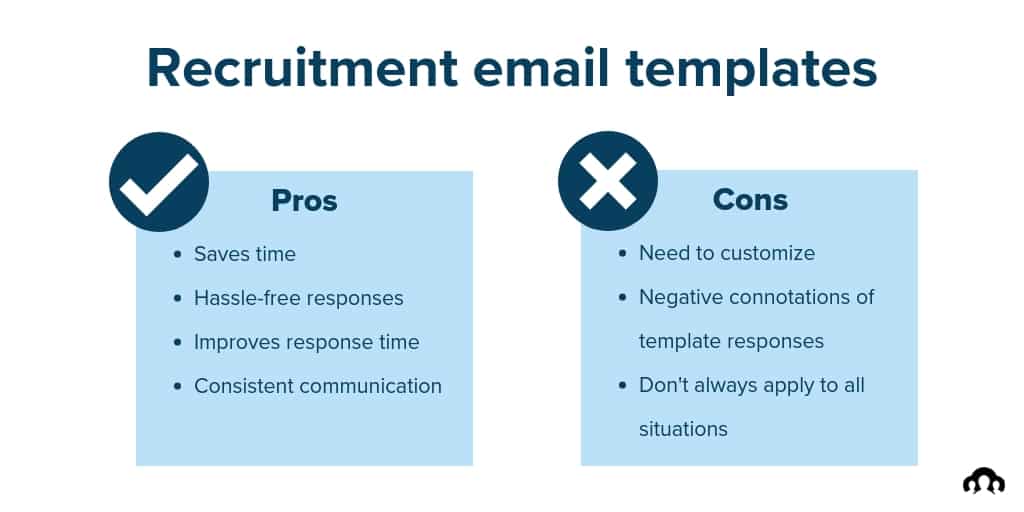Let’s face it: writing recruiting emails can sometimes feel like trying to win a game of chess against a squirrel—complicated, frustrating, and slightly nuts. But fear not, fellow recruiter! In this blog, we’ll dive into the dos and don’ts of crafting effective emails and provide email templates for recruiters like you to use that will have potential candidates saying “yes, please!” faster than you can say “job offer.” Plus, I’ll share some handy templates, sprinkle in a few stats to back it up, and introduce you to a nifty tool called Skail that can help you personalize your outreach.
Why Recruiting Emails Matter
Before we jump into templates and tactics, let’s discuss why recruiting emails are so vital. According to LinkedIn, 70% of the global workforce is made up of passive candidates—meaning they aren’t actively looking for a new job but are open to opportunities if they’re presented with the right one. If you think about it, that’s a goldmine of potential talent just sitting in their pajamas, scrolling through cat memes.
However, getting their attention isn’t easy. Studies show that personalized emails can lead to a 26% increase in open rates. It’s like throwing a dog a bone—if it’s the right bone, they’ll come running! So, let’s make sure we’re crafting emails that stand out.

Essential Elements of an Effective Recruiting Email
Before we dive into the templates, here are some key ingredients to make your recruiting emails more effective:
- Personalization is Key: People want to feel special. Use their name, mention a mutual connection, or reference something specific from their resume. Think of it like sending a birthday card—nobody wants a generic “Happy Birthday!” when they could have a card that says, “Hey [Name], remember when we got stuck in that elevator together?”
- Clear Subject Line: Your subject line should be as intriguing as a cliffhanger in a soap opera. Keep it concise, relevant, and make it clear what the email is about. No one wants to open an email that sounds like spam from a Nigerian prince.
- Keep it Concise: Don’t overwhelm candidates with walls of text. Get to the point quickly, and avoid using jargon that would make even the most seasoned recruiter scratch their heads.
- Call to Action (CTA): End with a clear CTA. What do you want them to do? Respond, schedule a call, or review a job description? Be direct.
- Follow-Up: If you don’t hear back, don’t be afraid to follow up. Sometimes emails get lost in the abyss of inboxes, like that sock you lost in the dryer.
1. First-Touch Sourcing Candidate Email
Your goal here is to capture attention like a magician pulling a rabbit out of a hat.
Why It Matters: You’re trying to engage passive candidates, and a compelling outreach email can work wonders in building your talent pipeline.
Template:
Email Subject Line: Exciting Opportunity Awaits: [Job Title] at [Company Name]
Hi [First Name],
I stumbled upon your profile while browsing [Where/How You Found Them] and couldn’t help but reach out. We’re looking to fill a [Job Title] position at [Company Name], and your experience in [Field/Skill] really caught my eye.
If you’re curious about this opportunity, let’s chat! Are you available for a quick call on [Date/Time]?
Looking forward to connecting!
Best,
[Your Name]
[Your Email Signature]
2. ‘Are You Still Interested in the Position?’ Email
Sometimes the best candidates slip through the cracks, and you just need to give them a gentle nudge.
Why It Matters: Reaching out to past candidates can significantly reduce your sourcing time and cost.
Template:
Email Subject Line: We Haven’t Forgotten You! New Opportunity at [Company Name]
Hi [First Name],
I hope this email finds you well! Remember me? I’m [Your Name] from [Company Name]. A while back, you applied for our [Previous Role], and although we went a different direction then, I always thought you were a standout candidate.
A [Job Title] position just opened up, and I believe your skills in [Detail About the Candidate] could make you a perfect fit.
Let’s catch up! Would you be free for a call on [Date/Time]?
Excited to hear from you!
Best,
[Your Name]
[Your Email Signature]
3. Employee Referral Email
Word of mouth is still one of the most effective forms of recruitment.
Why It Matters: Your current employees know the company culture and can help bring in like-minded talent.
Template:
Email Subject Line: A Great Candidate for [Job Title] — Referred by [Contact’s Name]
Hi [First Name],
I hope you’re doing well! [Contact’s Name] mentioned you as someone who could be a great fit for our [Job Title] role at [Company Name]. They spoke highly of your [Experience/Expertise], and I’d love to discuss this opportunity with you.
Can we set up a time to chat? How does [Date/Time] work for you?
Looking forward to connecting!
Best,
[Your Name]
[Your Email Signature]
4. Application Follow-Up Email
Candidates appreciate a timely response, especially after submitting their applications.
Why It Matters: Keeping candidates informed shows you value their time and interest.
Template:
Email Subject Line: We Received Your Application at [Company Name]!
Hi [First Name],
Thank you for applying for the [Job Title] position at [Company Name]. I wanted to confirm that we have received your application and are currently reviewing it.
You can expect to hear back from us within [Time Frame]. In the meantime, feel free to check out our website [Link] to learn more about our company culture.
Best,
[Your Name]
[Your Email Signature]
5. Interview Invitation Email
This is your chance to bring the candidate in for a closer look—like a first date but without the awkward silences.
Why It Matters: A clear interview invitation sets the stage for a great candidate experience.
Template:
Email Subject Line: Let’s Schedule Your Interview at [Company Name]!
Hi [First Name],
I’m excited to invite you for an interview for the [Job Title] position at [Company Name]. We were impressed with your background and would love to learn more about you.
Are you available for a [Interview Format] with [Interviewer] on [Day, Date] at [Time, Time Zone]?
Looking forward to your response!
Best,
[Your Name]
[Your Email Signature]
6. Interview Confirmation Email
After scheduling, confirm the details to avoid confusion—no one wants to show up at the wrong location!
Why It Matters: A confirmation email helps reduce anxiety for the candidate and ensures everyone is on the same page.
Template:
Email Subject Line: Interview Confirmation for [Job Title] at [Company Name]
Hi [First Name],
This is to confirm your [Interview Format] interview with [Interviewer] on [Day, Date] at [Time, Time Zone].
Here are the details:
- **Interview Format:** [Phone/Video/In-Person]
- **Location/Link:** [Address/Meeting Link]
- **Agenda:** [Brief Agenda]
- **Dress Code:** [Casual/Formal]
We can’t wait to meet you!
Best,
[Your Name]
[Your Email Signature]
7. Interview Reminder Email
A quick reminder can keep candidates on their toes and prepared for the big day.
Why It Matters: It shows that you care about their experience and helps avoid no-shows.
Template:
Email Subject Line: Reminder: Your Interview with [Company Name] Tomorrow!
Hi [First Name],
Just a friendly reminder about your interview for the [Job Title] role at [Company Name] tomorrow!
When: [Day, Date] at [Start Time - End Time]
Where: [Meeting Link/Address]
Who: You will be speaking with [Interviewer, Job Title].
Looking forward to seeing you soon!
Best,
[Your Name]
[Your Email Signature]
8. Interview Follow-Up Email
Following up shows you’re still interested and keeps the momentum going.
Why It Matters: Great candidates are often in high demand, so a follow-up can keep them engaged.
Template:
Email Subject Line: Thanks for Your Interview at [Company Name]!
Hi [First Name],
Thank you for taking the time to interview with us! We were impressed by your [Specific Detail] and believe you’d be a great fit for the [Job Title] role.
We will be making our decision soon, and you can expect to hear from us within [Time Frame].
Thanks again for your time!
Best,
[Your Name]
[Your Email Signature]
9. Job Offer Email
You’ve found the one—now it’s time to seal the deal!
Why It Matters: A well-crafted offer email can make all the difference in securing top talent.
Template:
Email Subject Line: Your Job Offer at [Company Name]!
Hi [First Name],
I’m thrilled to offer you the position of [Job Title] at [Company Name]! Our team was impressed with your skills and experience, and we can’t wait to have you join us.
Here are the details:
- **Position:** [Job Title]
- **Compensation:** [Salary/Benefits]
- **Start Date:** [Start Date]
Please find the attached offer letter for your review. We look forward to welcoming you to the team!
Best,
[Your Name]
[Your Email Signature]
10. Rejection Email
Not the news candidates want to hear, but it’s important to communicate respectfully.
Why It Matters: A rejection email can help preserve your employer brand and keep doors open for future opportunities.
Template:
Email Subject Line: Your Application with [Company Name]
Hi [First Name],
Thank you for your interest in the [Job Title] position at [Company Name]. We appreciate the time you spent with us, but we have decided to move forward with another candidate.
We encourage you to apply for future opportunities that may align better with your skills. Stay connected with us by following our career page [Link].
Thank you again for your interest!
Best,
[Your Name]
[Your Email Signature]
How Skail Can Help
Now that you have a treasure trove of email templates, let’s talk about how to make your life even easier with Skail. Skail is an innovative tool that allows you to send personalized emails at scale, using a repeatable campaign approach. Imagine having a digital clone that crafts each email separately, making sure every candidate feels like you’re addressing them personally—even when you’re sending out hundreds of emails. Skail’s AI for recruiting is like having your cake and eating it too, without worrying about calorie count!

With a simple prompt and a list, each email can reference the candidate’s resume or any other information you wish to include – while molding it to your personal or company tone. Skail has a proprietary LLM that does not use any information for training the model nor do we store any information about your contacts – sensitive information is secure.
You can try Skail for free in our 14 day trial here.
Conclusion
Crafting effective recruiting emails doesn’t have to feel like rocket science. By personalizing your outreach, keeping your messages concise, and following up promptly, you can engage candidates and keep them interested in your opportunities. Remember, each email is a chance to showcase your employer brand and make a positive impression.
So, go forth and conquer the inboxes of potential candidates with these templates and tips! And don’t forget to check out Skail for even more personalized outreach. Happy recruiting!



